Michigan schools are now average. That’s progress.
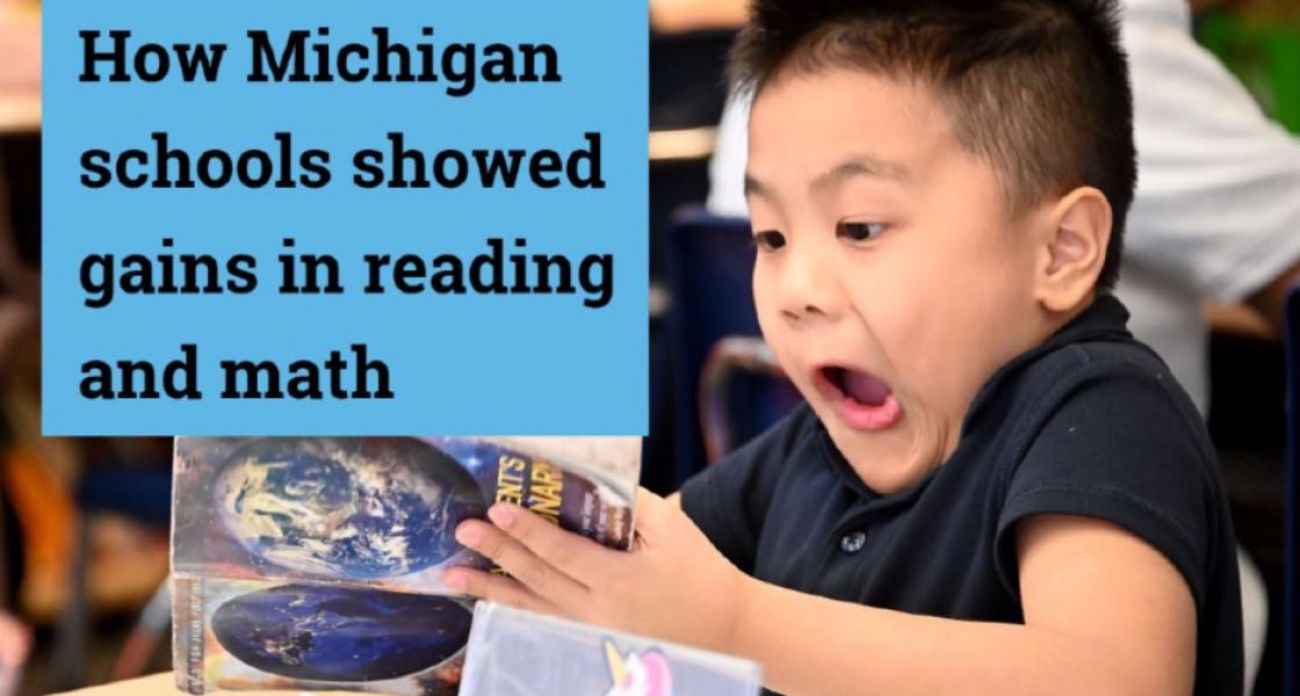
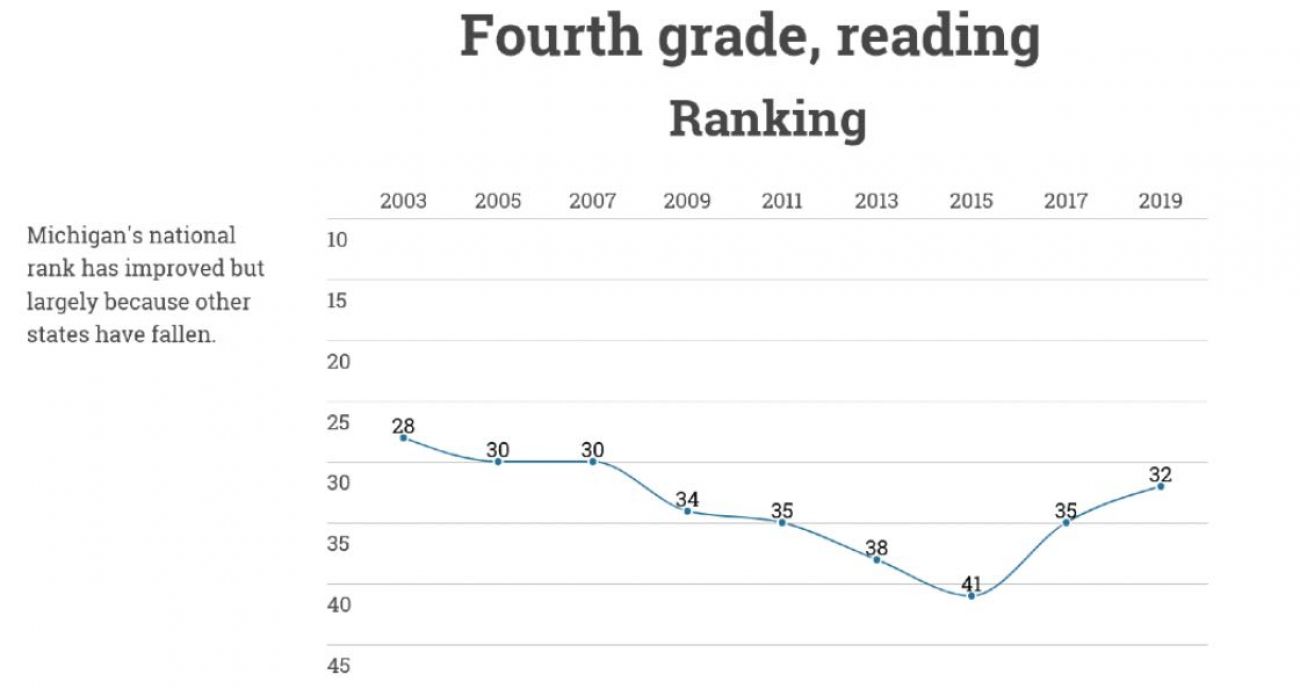
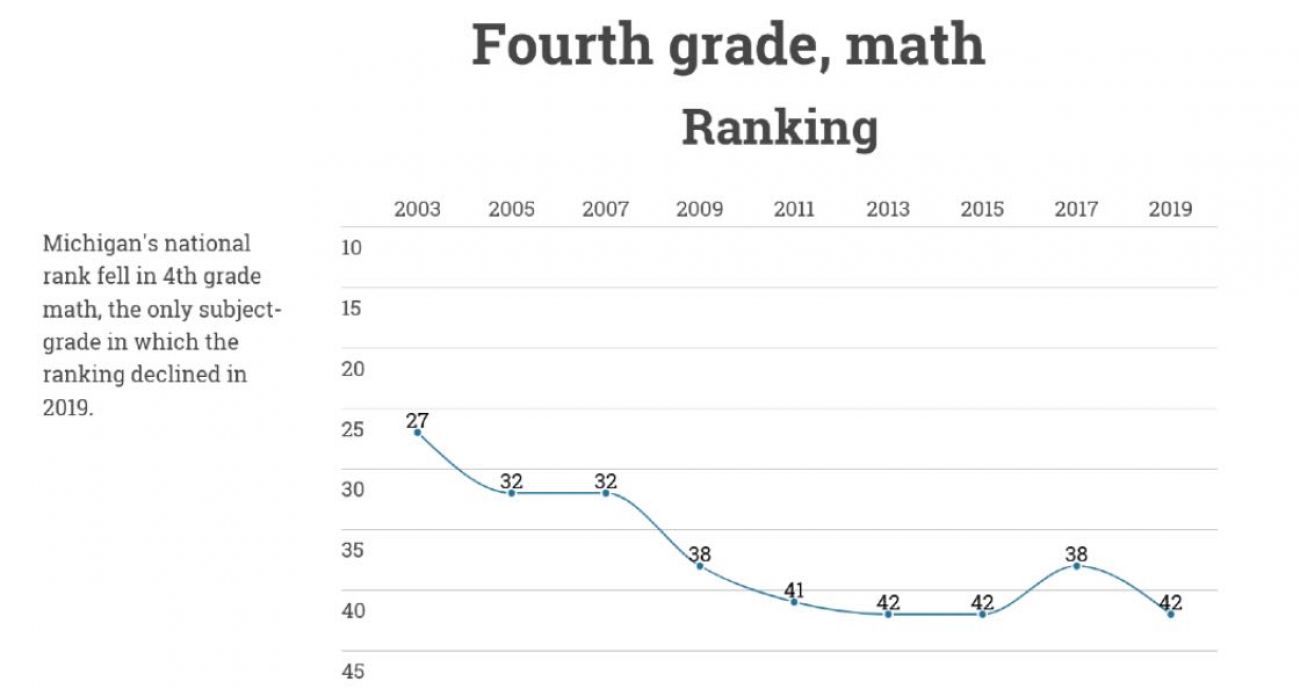
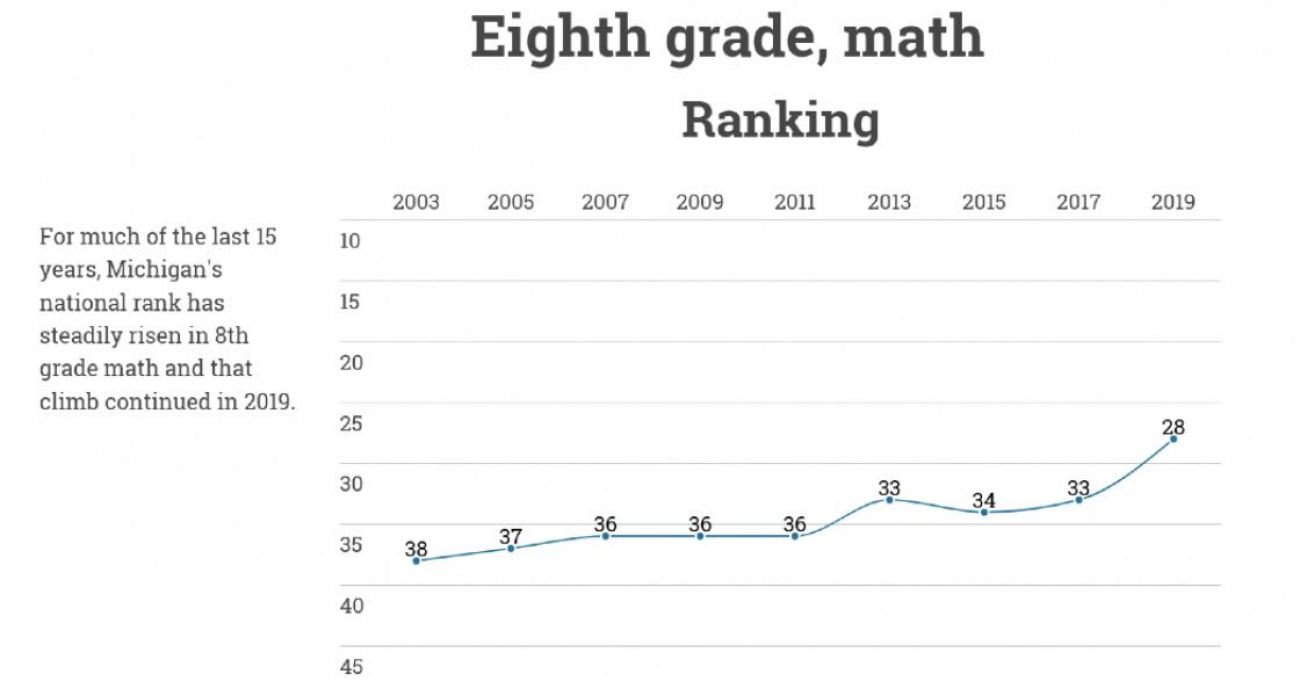


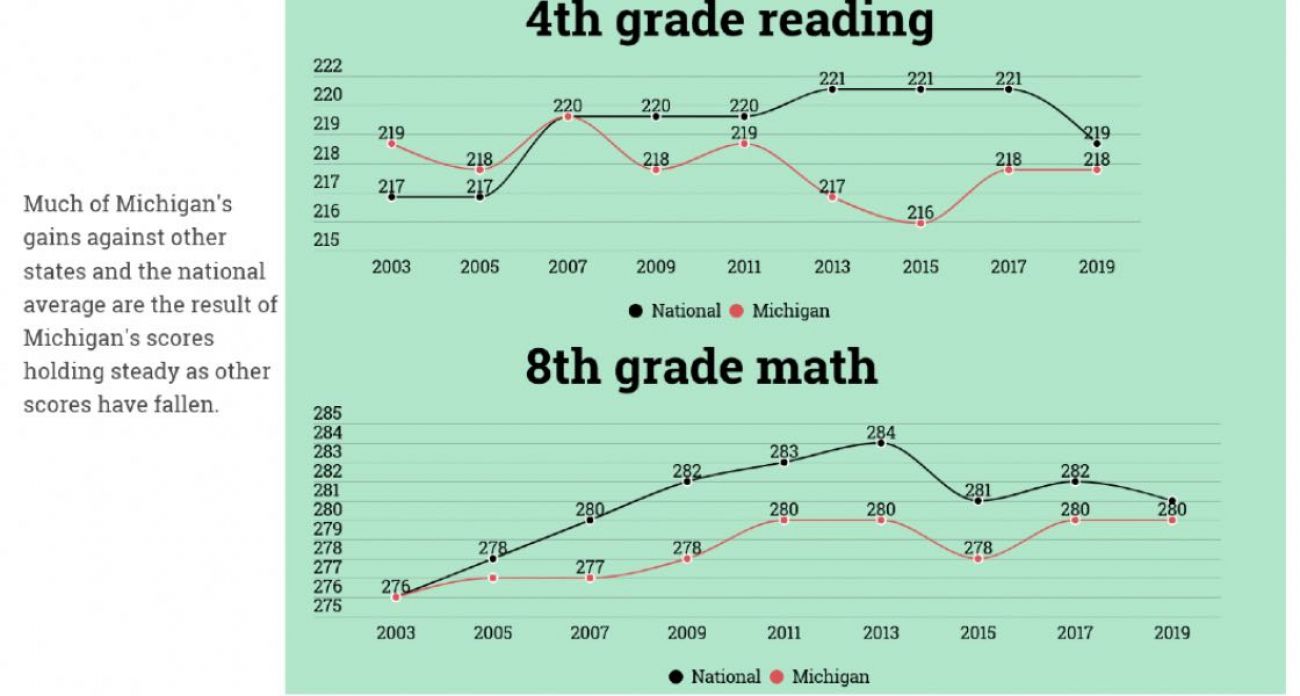
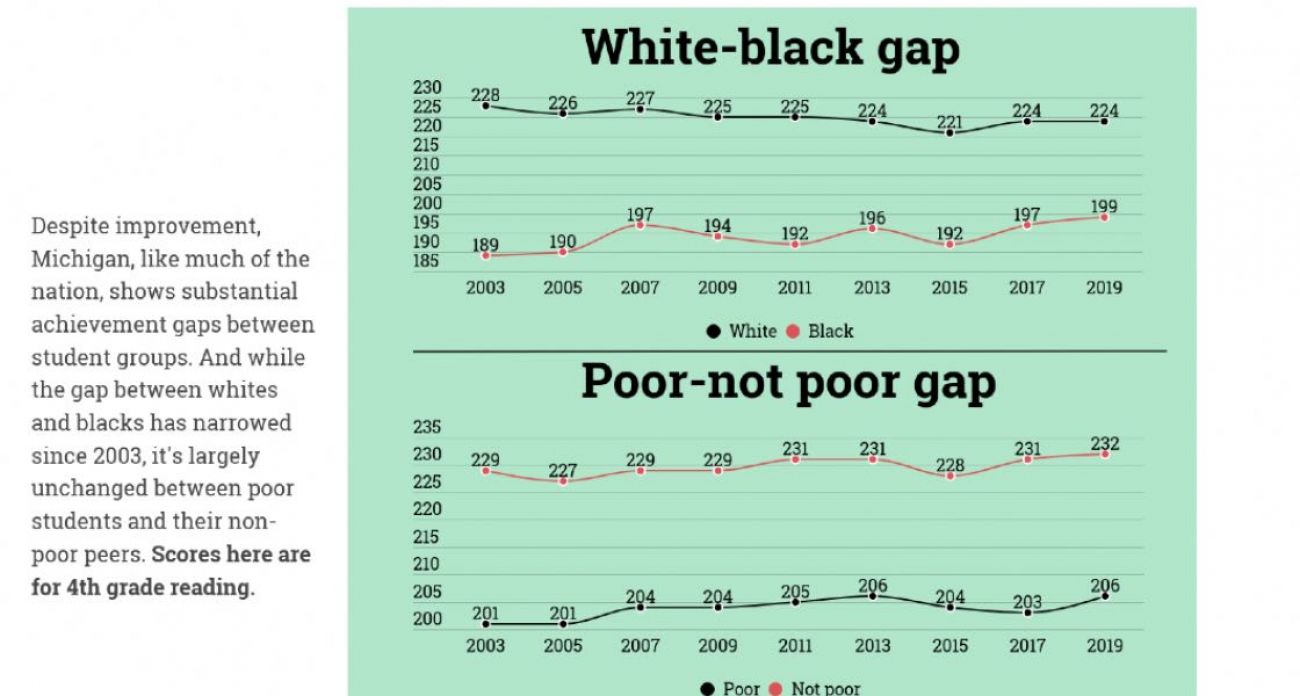
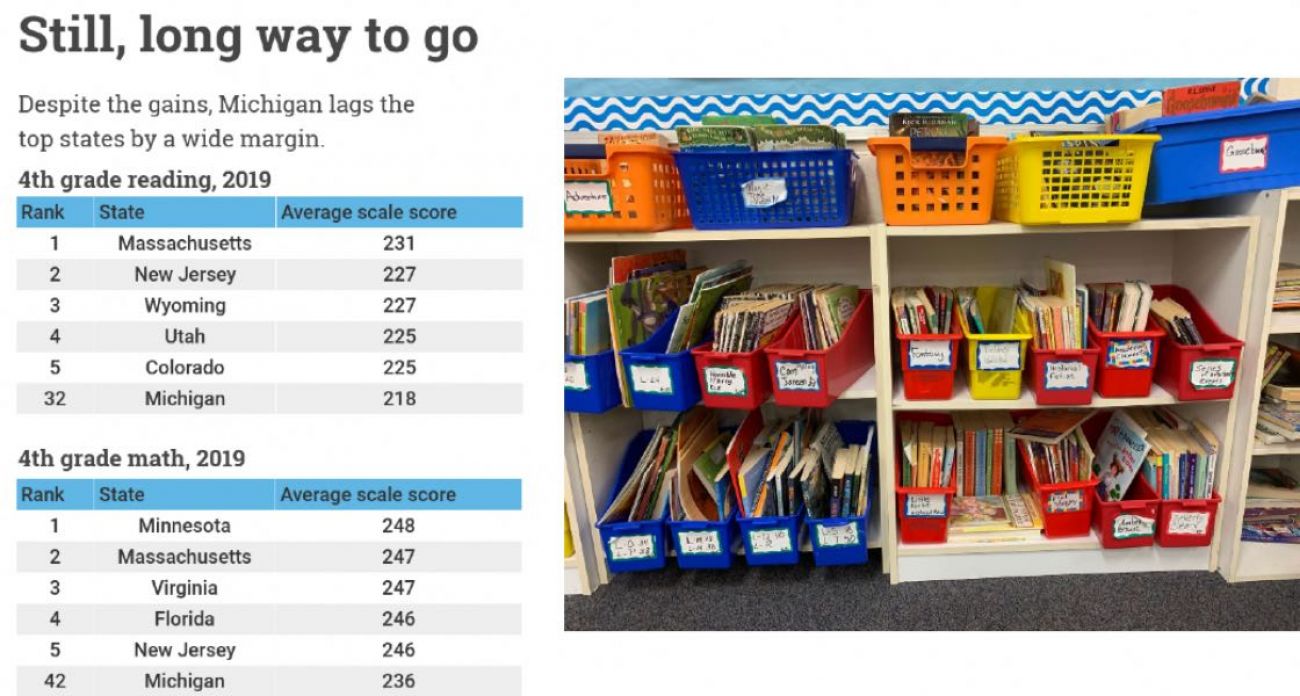
Michigan public school students show marked improvement compared to their peers in other states, according to national test results released Wednesday.
On the 2019 National Assessment of Educational Progress, often called “the nation’s report card,” Michigan students were firmly in the middle of the pack in eighth-grade math and reading (28th among the 50 states and the District of Columbia in both) and fourth-grade reading (32d); Michigan fourth-graders were 42d in math, a drop from 38th in 2017.
While approaching average doesn’t sound like cause for celebration, it does indicate that Michigan schools, which have languished in the bottom third of the nation for most of the decade, may be improving when compared to other states.
Gov. Gretchen Whitmer called the results a “step in the right direction,” and “great news for our students and families that we’re making progress on literacy.”
In general, Michigan improved by not losing ground: Its tests scores were similar to those in 2017 when the test was last administered, while many states, and the national average, declined slightly over that period. NAEP officials Tuesday said they did not know why scores were dropping nationally.
Detroit’s fourth-graders took a leap forward in math, raising their average scores by the most of any of the nation’s major cities that took part in the test. Still, Detroit remains at the back of the pack among 27 large cities across the country that volunteer to participate.
Only Detroit’s traditional public school students took the NAEP test ‒ public charter schools and private schools were excluded. The NAEP is given to a sample of students in cities and states across the country.
- Related: Still last among big cities, Detroit gains big in math on national test
- Related: Slideshow: How Michigan schools boosted national ranking
State-level tests, such as Michigan’s M-STEP, offer comparisons of schools within state borders, but say nothing about how Michigan students fare against their peers in other states.
That’s where the NAEP comes in. The biennial NAEP test results give education leaders, politicians and families of school children state-to-state comparisons of education systems. Without NAEP, Michigan would have difficulty determining if its schools are doing great or horribly compared to the rest of the nation.
The test was administered to about 300,000 students in traditional public, charter and private schools nationally in the spring of 2019, along with 27 urban districts including Detroit.
Major takeaways from the Michigan results:
- Michigan’s early literacy efforts may be paying off. Fourth-graders ranked 41st in the nation in 2015. The state has spent at least $80 million since then on attempts to improve reading in early grades in preparation for a third-grade read-or-flunk law that kicks in this year. In 2017, the first year additional funding for reading was available in schools, Michigan’s ranking jumped to 35th, and then to 32nd this year.
- White students and non-poor students scored the best among student subgroups in fourth-grade reading, but they also ranked poorly compared to their demographic peers nationwide. White fourth-graders ranked 40th in the nation among white students in reading, and Michigan’s non-poor fourth-graders ranked 35th.
- The achievement gap between black and white students in Michigan has narrowed since 2003 in fourth-grade math and reading and eighth-grade math and English. That narrowing is the result of academic gains by African-American students.
- However, the gap between poor and non-poor students hasn’t budged since 2003. Both gaps are similar to gaps found nationally.
- Michigan has the lowest percentage of fourth-graders reading at a “proficient” level in the Midwest, at 32 percent. In Ohio, 36 percent are rated proficient; in Indiana, 37 percent. The national average is 34 percent.
- Fourth-grade math is now Michigan’s biggest problem area in the test. It is the only tested area that saw the state’s ranking drop in 2019, to 42nd, from 38th nationally in 2017.
- Yet eighth-grade math is a bright spot, ranking 28th in the nation, 10 spots higher than a decade ago.
Michigan School Superintendent Michael Rice said the state’s schools improved their ranking among peers in other states despite “two significant challenges: a statewide teacher shortage (there are teacher shortages nationally), which adversely affects most severely the highest poverty and/or most remote districts, and inadequate and inequitable state funding for Michigan’s 1.5 million children.
“Imagine how much more rapid our improvement could be if we invested more in our children and funded their specific needs,” Rice said.
John Yun, associate professor of education at Michigan State University, who looked at the latest NAEP data for Bridge, pointed to another warning sign inside the data. While test score averages for the state are flat, there is a growing gap between the state’s highest-achieving students and its lowest-achieving. The test scores of those two groups are diverging, Yun said.
For example, in eighth-grade math, the gap between the top 10 percent of readers and the lowest 10 percent has grown by almost a semester of learning over the past decade, according to NAEP scores.
“People are reading much better now than two decades ago, but we’ve given back a lot of the gains since 2009,” Yun said. “And it’s striking that the losses are most felt at the lowest achievement levels.”
Amber Arellano, executive director of Michigan-based Education Trust-Midwest, said she saw glimmers of hope and pessimism for Michigan schools in the latest test results.
“Today is cause for a sobering celebration,” Arellano said. “Between 2017 and 2019, Michigan low-income students led the nation for improvement in eighth-grade math. These notable gains should be applauded.
“On the other hand, Michigan is still not a top-improving state since 2003 for key subjects such as early reading. And the data suggest Michigan is many years away from becoming a top education state for all students, particularly students who are most left behind in our state. This new data should be a clarion call for changing how we invest and support public education for all children in our state."
Michigan Education Watch
Michigan Education Watch is made possible by generous financial support from:
Subscribe to Michigan Education Watch
See what new members are saying about why they donated to Bridge Michigan:
- “In order for this information to be accurate and unbiased it must be underwritten by its readers, not by special interests.” - Larry S.
- “Not many other media sources report on the topics Bridge does.” - Susan B.
- “Your journalism is outstanding and rare these days.” - Mark S.
If you want to ensure the future of nonpartisan, nonprofit Michigan journalism, please become a member today. You, too, will be asked why you donated and maybe we'll feature your quote next time!






